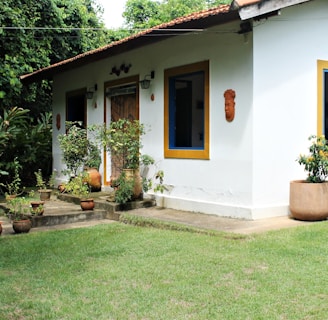The New US Trade Tariffs and Their Impact on Tourism in the Azores
The new US trade tariffs and their impact on tourism in the Azores: what hosts need to know.
4/20/20255 min read


The new US trade tariffs and their impact on tourism in the Azores: what hosts need to know
Since the beginning of 2025, with Donald Trump’s return to the US presidency, the world has been witnessing a new wave of trade tensions, with broad tariffs being imposed on imports — especially from China. Some of these tariffs have reached as high as 200%, causing major disruptions to the global economy — and inevitably influencing the international tourism sector.
Although the Azores may seem somewhat removed from these global dynamics, the region’s deep historical and cultural ties to the United States, combined with the growing importance of American tourism, make it particularly sensitive to the economic effects of this new political direction.
In this article, we explore what these new policies mean, how they might affect American travel behaviour, and what local accommodation owners and managers should keep in mind in the months ahead.


The Azores remain on the radar for American tourists — but with new challenges on the horizon.
What is happening with US trade tariffs?
Since January 2025, the new US administration has introduced general trade tariffs of 10% on virtually all imported goods, alongside extremely high targeted tariffs — up to 200% — on products from China.
According to the US government, these measures aim to protect domestic manufacturing and rebalance the trade deficit. In practice, however, they are leading to a sharp increase in consumer prices in the US, adding to inflationary pressure early in the year.
Economic impact: the dollar, inflation, and consumer behaviour
These new trade policies have three direct consequences that anyone working in the tourism sector should consider:
Higher domestic prices in the US: with imported goods becoming more expensive, the cost of living rises and households are forced to adjust spending habits — travel included.
Currency fluctuations: although the US dollar remains relatively stable for now, market uncertainty and aggressive policy may weaken the dollar against the euro — making European travel more expensive for the average American tourist.
Reduced disposable income for travel: if living costs continue to climb, many Americans may opt to travel less, shorten trips, or seek out more affordable destinations.


The importance of American tourism in the Azores
The connection between the Azores and the United States is not only economic — it is historical, emotional, and enduring.
A bond rooted in people and heritage
Throughout the 20th century, tens of thousands of Azoreans emigrated to the United States, creating strong, deeply rooted communities — especially in California, Massachusetts, Rhode Island, and New Jersey. This emigration led to an ongoing flow of return visits, heritage tourism, and even real estate investment from emigrants and their descendants.
These visitors are often motivated by a desire to reconnect with their roots — to visit the land of their parents or grandparents. With the cost of living rising in the US, this type of emotionally driven tourism could be one of the first to feel the strain.
Important note:
While official data shows that around 12% of tourists in the Azores in 2023 were from the United States, this figure is almost certainly underestimated.
Many emigrants or descendants hold dual citizenship and travel using their Portuguese ID — which means they are not counted as “foreign tourists” in official statistics.
In reality, the impact of US-origin tourism is greater than the numbers suggest — and any decline in this flow could have a more significant effect than it initially appears.
Growth in direct air connections between the US and the Azores
In 2024 and 2025, the number of direct flights between the US and the Azores increased, particularly during peak seasons (spring and summer).
Currently, there are regular direct flights between New York (JFK) and Ponta Delgada (PDL) operated by Azores Airlines and United Airlines, as well as seasonal connections to Boston and Providence.
These routes reflect the growing importance of the North American market — and any economic shift or change in consumer behaviour could directly impact flight demand and local accommodation bookings.


What changes might we expect?
If the current trend continues, several scenarios are likely:
Fewer American tourists — especially leisure travellers without personal ties to the region;
Lower average spend per guest — visitors choosing shorter stays, budget accommodation, and less local consumption;
Increased demand for domestic travel within the US or destinations with more favourable exchange rates.
This means that, even if the Azores remain attractive, American tourists may become more selective, more price-sensitive, and less likely to book impulsively.
What should hosts do and how?
In a global economic context of change, flexibility and forward planning become the biggest competitive advantages. Here are some practical strategies:
1. Review pricing with intelligence
Use dynamic pricing tools to adjust your nightly rates based on demand, events, and seasonality.
If signs of a US market slowdown appear, you may balance occupancy by lowering rates slightly during quieter periods.
2. Prioritise multilingual communication
If you’re not already doing so, invest in well-written English descriptions and materials. This ensures your listing remains appealing to international guests — especially American travellers who still plan to visit.
3. Adapt your offers to current trends
Consider creating long-stay discounts, workation packages, or early bird promotions that appeal to cost-conscious travellers.
4. Diversify your target markets
Don’t rely solely on American guests. Focus also on Portuguese, French, German, and Scandinavian visitors — markets that have shown stable demand.
5. Monitor booking trends and data
Stay alert to changes in booking patterns (fewer Americans? more last-minute reservations?) and adjust your messaging and pricing strategy accordingly.


Conclusion: a shifting landscape that demands local attention
The new US trade tariffs are not just a distant macroeconomic issue. They are already shaping the behaviour of American tourists, and by extension, impacting local tourism in the Azores.
Due to the strong historical and cultural ties between the Azores and the US, the region is especially sensitive to these changes — but this also represents a chance to act strategically and proactively.
At Your Nest, we monitor both international and local trends to help property owners keep their listings competitive, fully booked, and future-ready — even in uncertain times.
Own a property in the Azores?
Your Nest offers a professional short-term rental management service tailored to meet the challenges of a fast-changing tourism market.
👉 Learn more about our services here
Your Nest Azores - Property Management
We make it simple taking care of a unique property
© 2025. All rights reserved.
